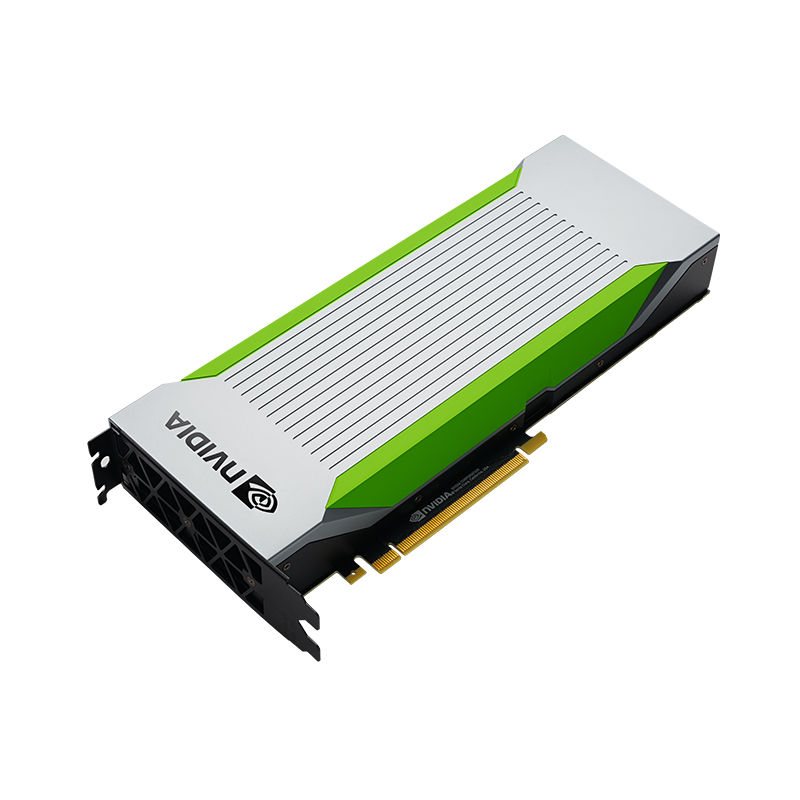PNY Reveals Passively-Cooled Quadro RTX 8000, RTX 6000 GPUs

Graphics card vendor PNY has listed two new Quadro products on its website: the Quadro RTX 8000 Passive and Quadro RTX 6000 Passive.
Both graphics card flaunt a new design with the absence of a cooling fan for heat dissipation. Although the graphics cards sport a passive cooling system, it doesn't mean that they don't require active cooling. The Quadro RTX 8000 and RTX 6000 Passive are designed for data centers and workstations. They'll probably be installed inside specialized enclosures with high-speed chassis fans that can provide them with the necessary airflow, and therefore, can get away without having its own cooling fan.
The Quadro RTX 8000 and RTX 6000 Passive measure 10.5 x 4.4 inches and take up two PCI slots. One of the main advantages of a fanless design is that you don't ever have to worry taking your system apart to replace a dying fan.
| Header Cell - Column 0 | Quadro RTX 8000 | Quadro RTX 8000 Passive | Quadro RTX 6000 | Quadro RTX 6000 Passive |
|---|---|---|---|---|
| Architecture (GPU) | Turing (TU102) | Turing (TU102) | Turing (TU102) | Turing (TU102) |
| CUDA Cores | 4,608 | 4,608 | 4,608 | 4,608 |
| Single-Precision Performance | 16.3 TFLOPS | 14.9 TFLOPS | 16.3 TFLOPS | 14.9 TFLOPS |
| Tensor Performance | 130.5 TFLOPS | 119.4 TFLOPS | 130.5 TFLOPS | 119.4 TFLOPS |
| Rays Cast | 10 Giga Rays/Sec | 10 Giga Rays/Sec | 10 Giga Rays/Sec | 10 Giga Rays/Sec |
| RTX-OPS | 84T | 80T | 80T | 80T |
| Tensor Cores | 576 | 576 | 576 | 576 |
| RT Cores | 72 | 72 | 72 | 72 |
| Texture Units | 288 | 288 | 288 | 288 |
| ROPs | 96 | 96 | 96 | 96 |
| Base Clock Rate | 1,395 MHz | 1,230 MHz | 1,440 MHz | 1,275 MHz |
| GPU Boost Rate | 1,770 MHz | 1,620 MHz | 1,770 MHz | 1,620 MHz |
| Memory Clock | 14 Gbps | 13 Gbps | 14 Gbps | 13 Gbps |
| Memory Capacity | 48GB GDDR6 | 48GB GDDR6 | 24GB GDDR6 | 24GB GDDR6 |
| Memory Bus | 384-bit | 384-bit | 384-bit | 384-bit |
| Memory Bandwidth | 672 GBps | 624 GBps | 672 GBps | 624 GBps |
| L2 Cache | 6MB | 6MB | 6MB | 6MB |
| TBP | 295W | 250W | 295W | 250W |
| Transistor Count | 18.6 billion | 18.6 billion | 18.6 billion | 18.6 billion |
| Die Size | 754 mm² | 754 mm² | 754 mm² | 754 mm² |
| Pricing | $5,500 | ? | $4,000 | ? |
The Quadro RTX 8000 and RTX 6000 Passive don't stray too far from their vanilla versions in regards to specifications. They retain the same TU102 silicon, featuring 4,608 CUDA cores, 576 Tensor cores and 72 RT cores. Nonetheless, the passive versions come with slightly lower core and memory clocks.
The Quadro RTX 8000 and RTX 6000 offer single-precision and Tensor performance up to 16.3 TFLOPs and 130.5 TFLOPs, respectively, while the passive variants are restricted to 14.9 TFLOPs and 119.4 TFLOPs, respectively. The memory bandwidth on the passive models top out at 624 GBps, while the non-passive ones check in with 672 GBps.




The main reason why the passive versions don't offer the same level of performance as the regular versions is because they are constraint to a tigher TBP (typical board power) envelope. The Quadro RTX 8000 and RTX 6000 are rated for 295W. The passive versions, on the other hand, max out at 250W. However, they still require a single 8-pin and 6-pin PCIe power connectors for external power.
As you would recall, the regular Quadro RTX 8000 and RTX 6000 are equipped with four DisplayPort 1.4 outputs and a USB-C port for Nvidia VirtualLink. Well, the passive variants don't come with any display outputs.
Get Tom's Hardware's best news and in-depth reviews, straight to your inbox.
PNY backs the Quadro RTX 8000 and RTX 6000 Passive with a limited three-year warranty. The manufacturer didn't reveal the pricing for the graphics cards, but we expect it to be in the same range of the regular models.

Zhiye Liu is a news editor, memory reviewer, and SSD tester at Tom’s Hardware. Although he loves everything that’s hardware, he has a soft spot for CPUs, GPUs, and RAM.
-
nofanneeded These are not passive cooled. they need case fans... or wind tunnels design in CASE.Reply -
escksu These are not passive cards. They are usually mounted in workstations or 2U racks where there are casing fans to cool the cards.Reply -
kyzarvs Reply
It does say that in the article?escksu said:These are not passive cards. They are usually mounted in workstations or 2U racks where there are casing fans to cool the cards.
Although the graphics cards sport a passive cooling system, it doesn't mean that they don't require active cooling.